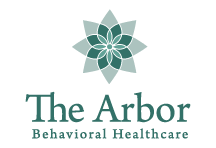Animal-assisted therapies have proven to be highly effective in treating various substance use disorders. The National Library of Medicine1 has published a number of studies citing the effectiveness of these types of therapies in the.
Addiction causes individuals to feel very disconnected, so working with animals fills that void by building meaningful connections with other living creatures. Equine therapy for addiction recovery is gaining popularity as an offering at many treatment centers, especially those in Texas, where horse riding has a long history.
In general, animals are well-known to be a comfort to humans. They make great companions and provide no shortage of emotional support. Working with horses in a therapeutic setting is highly rewarding.
Call The Arbor today to see what an equine therapy program looks like in Georgetown, TX and how our program, facilitated by Sacred Presence, can help you in recovery.
What Is Equine Therapy?
Equine therapy, led by a therapeutic professional, uses horses as a therapeutic tool. Receiving treatment at a treatment center with wide open spaces makes equine therapy an ideal addition to other therapeutic modalities already offered. Therapy includes feeding, grooming, and riding or leading the horse—depending on one’s comfort level. In fact, animal-assisted therapies work well alongside other experiential therapies like art therapy and yoga therapy.
Clients enrolled in an equine therapy program will connect with a majestic animal that they will be responsible for and, in turn, receive the benefits of companionship without judgment. This therapy has been shown to reduce stress and help find a sense of calm in these animal-to-human connections. Interactions with horses can also help individuals develop more positive interactions with humans in their lives.
Equine Therapy for Addiction Recovery in Georgetown, TX
Once you find an equine therapy program, knowing what to expect is important. You will learn how to properly care for the horse, and working with the horse offers opportunities and experiences specific to equine therapy programs. You will experience everything from improved self-confidence to better interpersonal skills and better ways to manage stress and triggers.
Benefits of equine therapy include:
- Trust building
- Stress and anxiety reduction
- Refocusing on the positive
- Better self-esteem and self-confidence
- Managing impulse control
- Improving problem-solving skills
- More effective ways to communicate, especially non-verbally
- Recognizing healthy boundaries
- How to better care for others and care for yourself
The beautiful weather and wide open spaces in Texas make outdoor experiential and recreational therapies ideal at addiction treatment and recovery centers throughout the state. It’s a unique treatment experience that should not be missed. The Arbor offers more than 60 acres of campus in Georgetown, TX, to explore—on two legs or four—as part of our therapy programs.
Contact The Arbor for Equine Therapy for Addiction Recovery
Caring for another creature can also help you take better care of yourself. Equine therapy helps to build compassion and empathy and pave the way for healthier relationships once you leave treatment.
If you are looking for an addiction recovery experience in Texas, The Arbor offers the convenience of being close to the city of Austin and having over 60 acres of land on campus to utilize as part of the treatment experience. In addition to equine therapy, clients at The Arbor can take part in traditional talk therapies, behavioral therapies, and recreational therapies like fishing, hiking, and disc golf.
To find out what equine therapy looks like as part of addiction recovery in Georgetown, Texas, contact The Arbor online or call 844.413.2690. The treatment team is standing by to answer questions and guide you on the next steps in your treatment and recovery journey.

